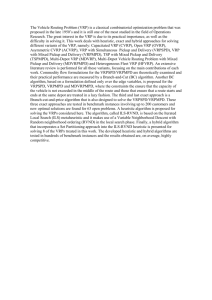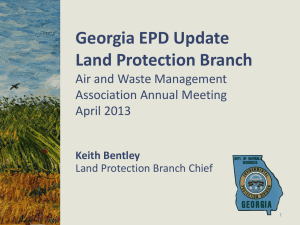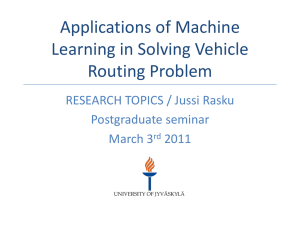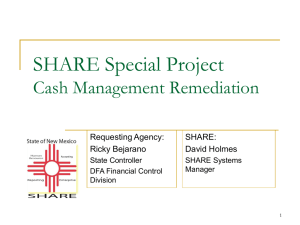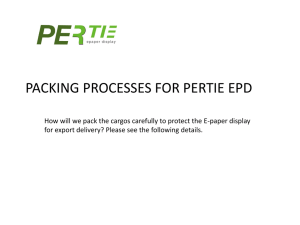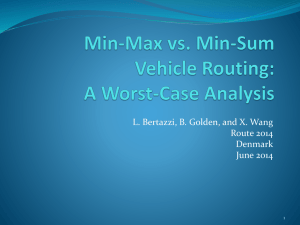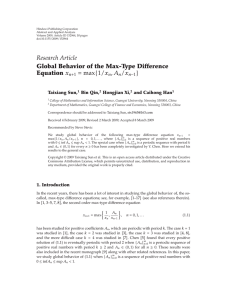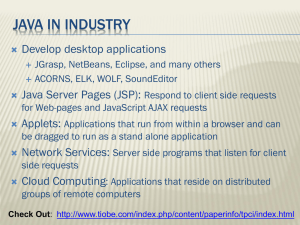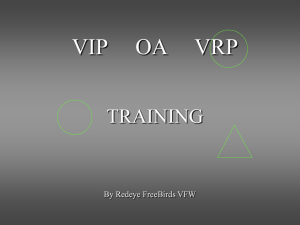VR - GIEC
advertisement
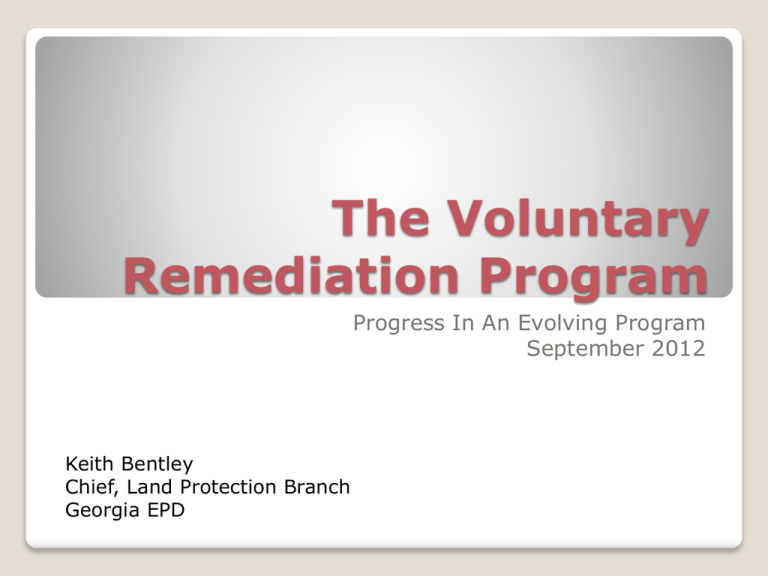
The Voluntary Remediation Program Progress In An Evolving Program September 2012 Keith Bentley Chief, Land Protection Branch Georgia EPD Legislation effective June 1, 2009 ◦ Objective is to privatize and expedite cleanup ◦ End points the same as HSRA ◦ Investigation and remediation supervised by PE/PG and paid by VRP applicant No funding to establish program initially VIRP Application and checklist developed in April 2010 Applications started to flow in 2010 No rules were promulgated Brief History of VRP 2 Conventional HSRA Approach • • • • • • • • • • EPD issues call for CAP Responsible party (RP) submits investigation plan EPD reviews/comments Investigation plan revised and initiated EPD approves site delineation RP submits remediation plan to meet HSRA clean up standards EPD reviews/comments Remediation plan revised and initiated RP submits Compliance Status Report when remediation complete EPD approves CSR and removes site from HSI Prescriptive Approach VRP Approach • RP develops general investigation remediation approach • Application for entry into VRP submitted to EPD • EPD approves general approach with comments • Delineation and clean up criteria generally less stringent • RP submits semi-annual progress reports • RP submits CSR when remediation complete • EPD approves CSR/delists site Flexible Approach VRP vs HSRA Approach 3 VRP works when: ◦ Groundwater contamination contained on “controlled” property ◦ Receptor farther away from source ◦ Participant is in compliance with rules, orders, etc. VRP does not work when: ◦ ◦ ◦ ◦ Site is on NPL list Site is subject to EPA remediation order Site has RCRA permit Groundwater contamination is technically difficult to contain/remediate ◦ Surface water or off site wells are impacted VRP Is Not For Every Site 4 Applications Received, Approved and Sites Delisted by Year 30 25 20 15 10 5 0 2009 2010 2011 2012 (July) 2012 (est.) Applications Received 2 29 17 10 17 Applications Approved 0 11 14 19 25 Sites Delisted by VRP 0 1 0 1 5 Year A Look At The Numbers 5 Breakdown of the 14 Unapproved Applications Application Incomplete 3 Application Withdraw n 2 Issues w /HWMA Orders 2 Under Review 7 Current Status of Unapproved Applications 6 Too long to get in program Too many “conditions” Too much management by EPD of details “ It feels like HSRA.” Criticisms of the VRP Program 7 Developing guidelines and examples for acceptable applications Updates to FAQ on web site Developing more consistent response to applications Developing model consent order for converting HWMA orders to VRP Improving response time- need complete application to approve quickly Improvements to VRP Program 8 Site vs. property questions What happens if site leaves VRP before remediation complete? What happens if remediation plan not successful? Expanded use of environmental covenants Financial Assurance issues Evolving technical issues ◦ ◦ ◦ ◦ Vapor intrusion assessment Area averaging Groundwater modeling Surface water issues What is the proper level of EPD review up front? Challenges and Evolving Issues 9 VRP could be used as excuse to delay Responsible party could “engineer shop” for the answer they want VRP may not be a permanent solution if controls become inadequate Less involvement of EPD upfront, may result in more uncertainty around acceptable end points- do not want surprises at the end Potential VRP Pitfalls 10 Benefits for Applicant • Certainty in clean up requirements • Lower transaction costs • Control of investigation and clean up approach • Lower remediation cost • Faster delisting from HSI affecting property transfers, financing , etc. Benefits for EPD • Faster site clean up • More sites removed from HSI • Less staff time spent on oversight • More resources to work on other sites Sites Cleaned up and Returned to Productive Use Benefits of VRP 11
